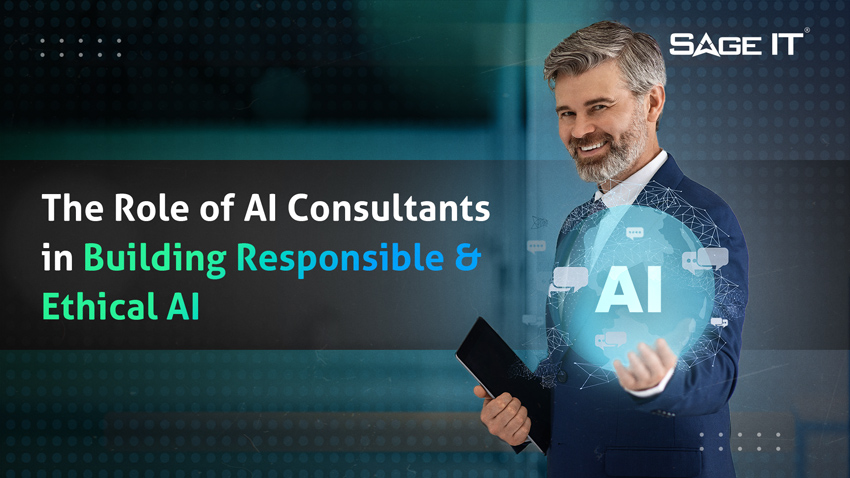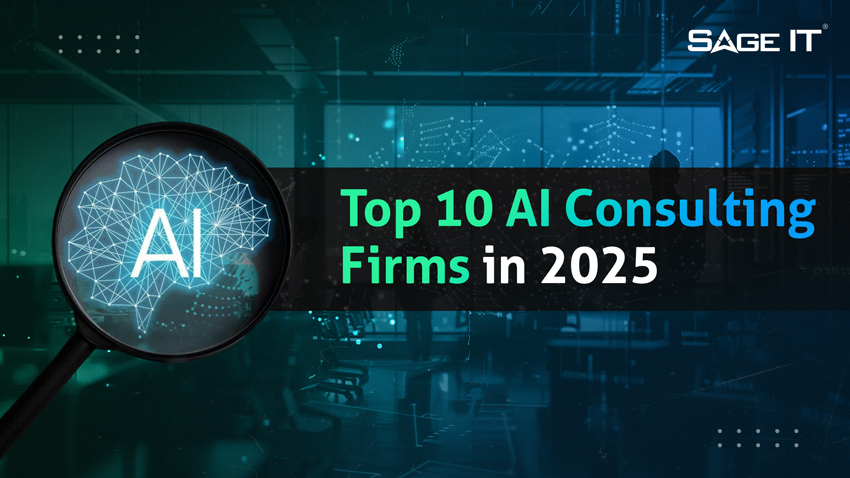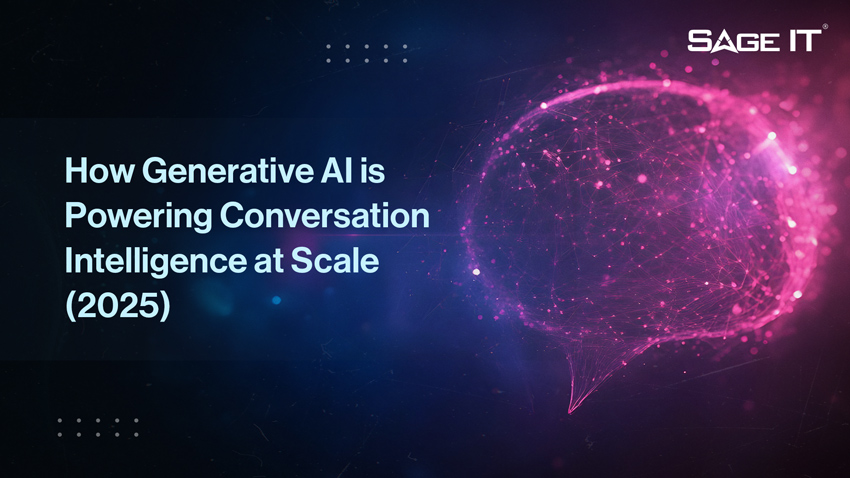Artificial Intelligence (AI), is a concept that has been around for decades, but it has only recently become more accessible and widely used. It is transforming various industries, including finance, healthcare, retail, and manufacturing. AI’s significance in today’s world cannot be overstated. In this comprehensive guide on Artificial Intelligence, we will explore the basics of AI, including how it works and its implications in our world. We will also delve deeper into the different forms of AI and their real-world applications. Furthermore, we will discuss the ethical considerations surrounding AI usage and its history over the decades. Lastly, we will contemplate what the future holds for AI and how it is likely to change our lives in ways we cannot even imagine yet. So buckle up and let’s dive into the fascinating world of Artificial Intelligence!
Understanding the Basics of AI
AI encompasses a wide range of technologies, including machine learning and natural language processing, enabling machines to perform tasks requiring human intelligence. These systems can analyze data and learn from it to adapt over time. The ultimate goal is to simulate natural intelligence for complex problem-solving and decision-making. AI applications are vast, including speech recognition, image recognition, and problem-solving. NLP terms such as machine learning models, deep neural networks, and unsupervised learning are integral to the development of AI systems, reflecting the influence of computer science and data science in this field.
Deciphering Artificial Intelligence
Deciphering Artificial Intelligence involves the application of complex algorithms for data processing, pattern recognition, and decision-making—mimicking human intelligence. It encompasses machine learning, neural networks, and language processing, aiming to enable machines to understand, reason, and learn from data. This technology allows computer systems to learn, reason, and self-correct, eventually achieving a level of intelligence similar to that of humans. With AI tools utilizing massive amounts of data, they continuously adapt and improve, much like the human brain. By understanding the essence of AI and its components, we pave the way for advancements in smart machines and real-time decision-making.
How Does AI Function?
AI systems operate by processing vast amounts of data to recognize patterns and trends. They employ algorithms and models to analyze data, identify patterns, and make predictions. Continuously learning from new data, AI systems improve their accuracy and performance over time. AI encompasses technologies like machine learning, deep learning, natural language processing, and computer vision. With this functionality, AI can automate tasks, make decisions, and solve complex problems.
Differentiating AI, Machine Learning, and Deep Learning
Differentiating AI, Machine Learning, and Deep Learning
AI incorporates machine learning, deep learning, and other technologies to simulate human intelligence. Machine learning, a subset of AI, focuses on training systems to learn from data and make predictions. On the other hand, deep learning utilizes neural networks with multiple layers to process data. These technologies have distinct applications, algorithms, and complexities, with deep learning being a specialized form of machine learning, which, in turn, is a component of AI.
An Overview of AI, Machine Learning, and Deep Learning
AI, machine learning, and deep learning form the backbone of intelligent systems across various industries. Machine learning empowers systems to discern patterns and make decisions sans explicit programming, while deep learning leverages multi-layered neural networks to tackle complex tasks. From finance to healthcare, these technologies find application in diverse sectors, enabling functions such as natural language processing, image recognition, and predictive analytics. With the integration of AI tools, real-time data analysis, and deep neural networks, these smart machines handle massive data sets efficiently, mirroring the cognitive abilities of the human brain. This amalgamation of NLP terms elucidates the pivotal role of these advancements in reshaping modern technology.
How they Interrelate
The interrelation among AI, machine learning, and deep learning is crucial. Machine learning, as a subset of AI, focuses on training systems to learn from data and make predictions, while deep learning, a specialized form of machine learning, processes data using neural networks with multiple layers. Each technology has distinct applications, algorithms, and levels of complexity. When combined, these technologies enable the development of intelligent systems capable of complex tasks and decision-making, showcasing their interconnected and distinctive roles in intelligent system development.
The Implication of AI in Our World
Transforming industries, business operations, and daily life, AI has significant implications. From predictive analytics to personalized recommendations, its applications are diverse. With the potential to revolutionize healthcare, financial services, and manufacturing processes, AI’s significance lies in automating tasks, analyzing big data, and enhancing human capabilities. Despite its potential benefits, concerns surrounding privacy, ethical use, and potential risks remain. The evolving landscape of AI, machine learning models, and deep neural networks continues to impact real-time decision-making and the future of smart machines.
Why is AI Significant?
AI’s significance stems from its ability to revolutionize industries, drive innovation, and improve efficiency. It enables real-time data analysis, personalized experiences, and autonomous decision-making. Furthermore, AI has the potential to transform critical sectors like healthcare, finance, and transportation. However, its significance also raises ethical, social, and economic considerations.
The Pros and Cons of AI
Enhanced productivity, task automation, and improved decision-making are among the benefits of AI. This technology also holds promise for solving complex issues, personalizing experiences, and enhancing quality of life. However, privacy concerns, ethical use, job displacement, and potential biases are significant drawbacks. The societal impact of AI raises questions about accountability, transparency, and ethical usage. Understanding these pros and cons is vital for navigating the challenges and maximizing the benefits of AI in various sectors.
Diving Deeper into AI: Strong Vs. Weak AI
Strong AI, often referred to as Artificial General Intelligence (AGI), represents systems that exhibit human-level intelligence, reasoning, and problem-solving capabilities. Its objective is to emulate human cognitive functions, such as learning, understanding, and complex decision-making. On the other hand, Weak AI, also known as narrow AI, is focused on executing specific tasks without possessing general intelligence. This form of AI is designed for specialized applications like language processing, image recognition, and data analysis. The distinction between strong and weak AI significantly influences the potential applications, capabilities, and ethical considerations of intelligent systems.
Defining Strong AI
Strong AI, also known as artificial general intelligence, seeks to replicate human intelligence, enabling machines to comprehend, learn, and utilize knowledge autonomously. The ultimate objective of strong AI is to demonstrate general intelligence and problem-solving capabilities, allowing systems to execute intricate tasks devoid of human intervention. This concept, often portrayed in science fiction, embodies the aspiration for machines to exhibit cognitive abilities akin to humans. With strong AI, the aim is to achieve a level of machine intelligence comparable to the complexities of the human brain, thus revolutionizing various fields and industries.
Exploring Weak AI
Weak AI, also referred to as narrow AI, is developed to perform specific tasks, such as language processing and image recognition. Examples of weak AI include virtual personal assistants and chatbots. These systems function within predefined objectives and do not possess general intelligence or consciousness. Unlike strong AI, which aims to replicate human cognitive abilities, weak AI operates within a limited scope. Its prevalence is notable in applications like speech and image recognition. The contrast between weak and strong AI influences the capabilities and ethical considerations of intelligent systems.
The Various Forms of AI
The field of AI comprises diverse forms, including reactive machines, limited memory AI, theory of mind AI, and self-aware AI. These forms denote different levels of AI capabilities, each serving distinct purposes and having unique characteristics. The evolution of AI has led to advancements across these forms, showcasing its potential in solving complex problems. From reactive machines, which operate in real-time with no memory, to self-aware AI, which possesses consciousness and self-awareness, the spectrum of AI applications continues to expand, fueled by developments in machine learning models, expert systems, and artificial neural networks. The various forms of AI underline its versatility in addressing an array of challenges.
Reactive Machines
Reactive machines respond to input based on predefined rules, excelling in real-time decision-making within specific domains. These machines lack memory, do not form representations of the world, and cannot learn from past experiences. Examples of reactive machines include systems for playing games, such as chess. Their ability to make instantaneous decisions makes them valuable in various applications. Utilizing NLP terms like “deep blue,” “real time,” and “machine intelligence” enhances the understanding of how these smart machines operate within pre-set parameters, making them essential in fields such as computer science and expert systems.
Limited Memory AI
Limited memory AI systems leverage historical data or experience to inform future decisions, enhancing performance through accumulated knowledge. These AI applications include recommendation systems and predictive analytics, paving the way for context-aware technologies. By incorporating learning from past data, limited memory AI demonstrates adaptability and advancement in real-time decision-making. The evolution of AI, spanning from reactive machines to limited memory AI, showcases its potential in solving complex problems and contextual understanding. This progress aligns with the development of machine learning models, expert systems, and generative AI, reflecting the influence of AI tools on real-world implementations.
Theory of Mind AI
Machines are striving to grasp human emotions and intentions, predicting and interpreting human behavior. The objective is to model individuals’ beliefs, desires, and emotions, paving the way for more socially intelligent systems. As Theory of Mind AI progresses, it holds implications for human-machine communication and social interaction, potentially leading to the development of empathetic systems.
Self Aware AI
Machines with self-aware AI exhibit consciousness and introspection, marking a shift toward artificial general intelligence. This introduces deep ethical and philosophical inquiries, as these systems could experience subjective sensations and self-reflection. The notion of self-aware AI remains largely speculative and exploratory within the realm of artificial intelligence. Self-aware AI also encompasses the understanding of human emotions, intentions, and social interactions, paving the way for more empathetic and socially intelligent systems. The development of such AI also holds implications for human-machine communication and interaction.
Real-world Implementations of AI
Implementations of AI across various industries and everyday scenarios demonstrate its transformative potential. Sectors such as healthcare, finance, and automotive utilize AI for diverse purposes, enhancing operational efficiency and decision-making. Everyday examples of AI, including virtual assistants and recommendation systems, illustrate its widespread adoption. AI technologies contribute to improved customer experiences, underscoring their significance. The integration of AI tools, such as deep neural networks and machine learning models, has revolutionized real-time data processing and decision support systems. With the continuous evolution of AI, its applications are expected to further revolutionize diverse domains, driving innovation and progress.
Industries Benefitting from AI
AI’s impact is pervasive across various sectors. In healthcare, AI aids in medical imaging analysis, drug discovery, and personalized treatment. Furthermore, financial services utilize AI for fraud detection, risk management, and algorithmic trading. Similarly, transportation and logistics benefit from AI through route optimization, predictive maintenance, and autonomous vehicles. Moreover, retail leverages AI for demand forecasting, customer segmentation, and personalized marketing. The influence of AI extends to other industries such as manufacturing, energy, and entertainment, marking its significance in diverse domains.
Everyday Examples of AI
Everyday instances of AI are all around us in the modern digital age. Virtual assistants like Siri, Alexa, and Google Assistant have become commonplace, showcasing the widespread integration of AI into daily life. From streaming platforms to e-commerce websites, recommendation systems powered by AI algorithms cater to our preferences, enriching our online experiences. Moreover, the intelligent features embedded in smartphones, such as facial recognition and language translation, are facilitated by AI. Social media platforms utilize AI for content moderation, personalized feeds, and targeted advertising, adapting to individual user behaviors seamlessly. Additionally, AI-driven navigation apps deliver real-time traffic updates and optimize route suggestions, demonstrating the practical applications of AI in enhancing everyday efficiency.
The Ethical Aspects of AI Use
Ensuring responsible and fair use of artificial intelligence is crucial in today’s society. AI ethics plays a key role in integrating ethical considerations into AI systems, addressing potential biases and discrimination. Transparency in AI decision-making processes is imperative to ensure ethical use of AI. Ethical guidelines for AI use aim to safeguard individuals’ privacy and data rights. This commitment to ethical AI aligns with the historical and ongoing efforts to regulate AI usage, promoting the ethical implementation of AI technology.
Ethical Concerns in AI Implementation
Ethical considerations in AI implementation encompass privacy and data protection, emphasizing fairness and accountability as crucial elements. Preventing the perpetuation of biases and discrimination within AI systems is imperative, aiming to safeguard sensitive data and information from misuse. Additionally, addressing the potential impact of AI on employment remains a significant ethical concern. Incorporating NLP terms such as machine learning models, deep neural networks, and training data enhances the understanding of ethical considerations in AI implementation. These concerns align with the broader objective of ensuring responsible and fair utilization of artificial intelligence.
Regulating AI Usage
Establishing guidelines for the ethical and responsible deployment of AI is crucial. Oversight from governments and regulatory bodies is necessary to set standards for AI usage. Collaboration between policymakers, industry experts, and ethicists is essential for effective regulation. The goal of regulating AI usage is to mitigate potential risks associated with advanced AI systems and build trust in AI technology. Clear regulations can help ensure responsible AI applications.
Delving into AI’s Past: The History of AI
Unraveling the journey of AI unveils its evolution and technological strides over the years. Spanning decades, the history of AI signifies the continuous advancement of intelligent systems, offering valuable perspectives on its current capabilities. The historical context encompasses significant milestones in machine learning and cognitive computing, shaping present-day applications. From early concepts by computer scientists like Alan Turing to pivotal moments such as the development of expert systems and deep blue defeating Garry Kasparov, the historical odyssey of AI reflects the convergence of diverse disciplines like data science, computer science, and artificial neural networks.
AI Over The Decades
The evolution of AI over the decades showcases its significant progression, from early symbolic systems to modern deep learning algorithms. This advancement mirrors the continual growth in computational power and algorithmic innovation. The extensive research conducted over the years has resulted in groundbreaking developments in natural language processing and image recognition, paving the way for AI’s integration into various industries and domains. AI’s journey across the decades reflects the convergence of diverse disciplines and scientific contributions, culminating in its current state of unprecedented capability and potential.
What Does the Future Hold for AI?
The future of AI promises transformative advancements across industries and societal domains. It will impact employment, healthcare, and education. Ethical and responsible development will shape its trajectory. The future may bring new applications driven by innovative technologies. Opportunities for human-AI collaboration and intelligent decision support systems are on the horizon.
Conclusion
Artificial Intelligence is revolutionizing various industries and shaping the future of technology. From autonomous vehicles to virtual assistants, AI is becoming an integral part of our daily lives. However, with its immense potential comes ethical considerations. The responsible and ethical use of AI is crucial to avoid negative implications and ensure a positive impact on society. As AI continues to advance, it is essential to regulate its usage and address concerns such as privacy, bias, and job displacement.
For organizations looking to move from understanding AI to applying it effectively, AI consulting services can help bridge the gap between theory and real-world adoption. By leveraging expert guidance, businesses can align AI strategies with goals, accelerate implementation, and maximize value.
Embracing AI while staying mindful of its ethical aspects will help us navigate the exciting possibilities that lie ahead in this rapidly evolving field.

































